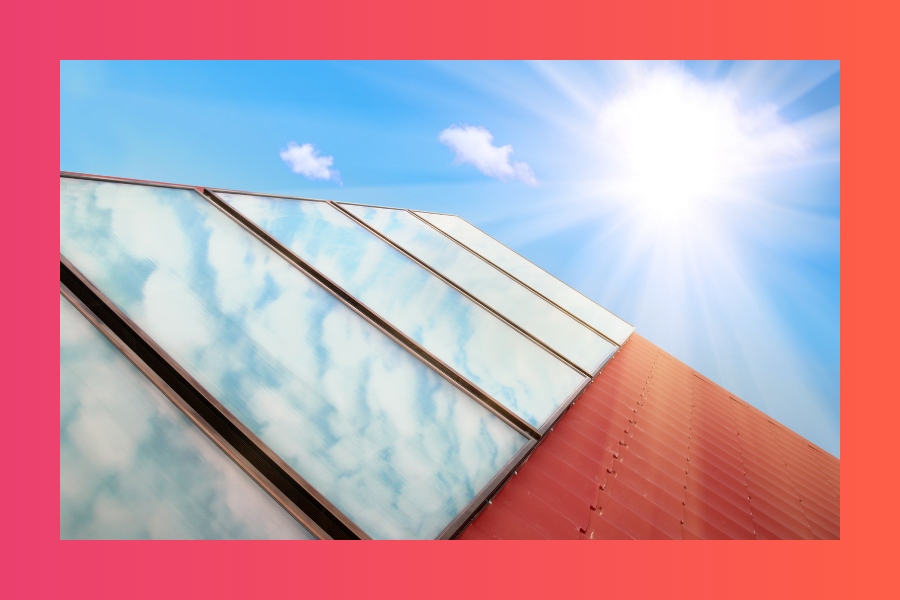The Pros and Cons of Solar Tiles Versus Solar Panels
Introducing solar power to a home is always a very exciting experience. Especially because - while rooftop solar systems are today indeed a common...
3 min read
![]() Solar Trust Centre Team
:
Mar 30, 2022 8:00:00 AM
Solar Trust Centre Team
:
Mar 30, 2022 8:00:00 AM

In the space of a few short years, rooftop solar power has gone from being something that’s great but uncommon across Australia, to now being widespread. The fact well over 2 million homes in Australia today have solar on their roof illustrates this. Yet a challenge that surrounds the rapid growth of rooftop solar is for newcomers the many different options out there can appear a little confusing at first. Especially because not only can the aims and precise means of operation vary among rooftop solar systems, but rules and regulations concerning them can differ too.
An example of this surrounds the difference between a typical photovoltaic (PV) rooftop solar system - with its numerous black panels on a roof a familiar sight to all of our readers - and a solar hot water heater. Both are rooftop solar systems, but function in different ways. So let’s look now at what each product here does precisely, and whether it’s possible to have both on the same roof.
For our regular readers, you’ve likely an answer to this question already in mind, yet we’re conscious there are always new people starting their journey to getting solar. That’s why it’s worthwhile to do a very quick recap here regarding how a typical rooftop solar system actually works.
In a nutshell, once installed, a rooftop solar system will see the panels capture sunlight which is then converted into energy. Thereafter, this energy goes to an inverter, which can then send the energy into the home for use, and excess energy to a battery for storage and later use, or to the grid to take advantage of a feed-in tariff. There are variables here, such as when the use of microinverters are involved, or a solar system is not connected to the grid and is known as an off-grid system (more on those to follow!) but overall the process is quite similar from one solar system to the next.
A solar hot water heater will do what its name implies. It will heat water that passes through it by utilising the energy acquired from the solar panels. There are a couple of different ways in which this process occurs - whether via what’s known as a pumped system or a close-coupled system - but the essential aim and outcome of any solar hot water heater is the same. Although a solar hot water heater can indeed heat water, it cannot generate solar power for use in the home in the form of electricity, and it won’t be connected to the grid.
Yes! There really is no reason a home cannot have both a PV rooftop solar system and a solar hot water heater. This said, there’s a misconception out there that is worth addressing, and then there are also a couple of considerations to factor in that represent the difference between what may be theoretically possible, and what’s actually possible.
As many of our readers who have a PV rooftop solar system would know, restrictions can exist surrounding the precise nature of the rooftop system. For instance, a restriction imposed on its size by the electricity network company that operates in the local area. If a network company imposes a restriction on the maximum size of a solar system, that means a household connected to the grid cannot have a system larger than the stated limit. Yet while this can limit the size (or increase the size) of a PV rooftop solar system, this limit won’t apply to a solar hot water heater. So even if a home already has a PV rooftop solar system that is the maximum size allowable on the grid, they should still be able to obtain a solar hot water heater.
With this misconception cleared up, it’s time to note what limitations can exist. First, to be able to have a rooftop system and hot water heater adequate rooftop space is required. Similarly, an installation’s proposed position on the roof could also be a key factor - as any shading on a rooftop’s ‘free space’ will diminish its suitability. Also, if there were plans to expand a rooftop solar system’s size, or get a new one altogether that’s off-grid, this may rule out the space necessary for a solar hot water heater. Furthermore, every home is ultimately unique, so actual possibilities can vary from place to place.
If it isn’t possible to have a rooftop solar system and a solar hot water heater together, it could be worthwhile to look into a hot water heat pump. They are an alternative way to obtain hot water for the home and can be suitable for circumstances where space constraints on the roof limit the ability for a solar hot water heater to be installed. This said it’s prudent to keep in mind that - while hot water heat pumps can certainly be useful - even if it may initially appear to be impossible to have a rooftop solar system and a solar hot water heater for the same residence, it’s always wise to consult with a trusted solar installer to see what’s actually possible.
This is because even if it may appear impossible for a certain type of rooftop solar plan to occur, in reality, there are many variables from home to home, and it may be actually doable. For instance, for those who can’t install a rooftop solar system on their home’s roof, it may be possible to install it on the garage! Accordingly, a consultation with a trusted solar installer will always be the best way of getting a clear-cut sense of what is actually possible for a particular home when it comes to combining a rooftop solar system and a solar hot water heater.
.jpg)
Introducing solar power to a home is always a very exciting experience. Especially because - while rooftop solar systems are today indeed a common...
.jpg)
When imagining the ideal environment in which a rooftop solar system operates, many Australians would understandably picture a backdrop of a...

Dion Epstein is the founder and managing director of G-Store, which provides holistic solutions for an all electric solar powered home, using rooftop...